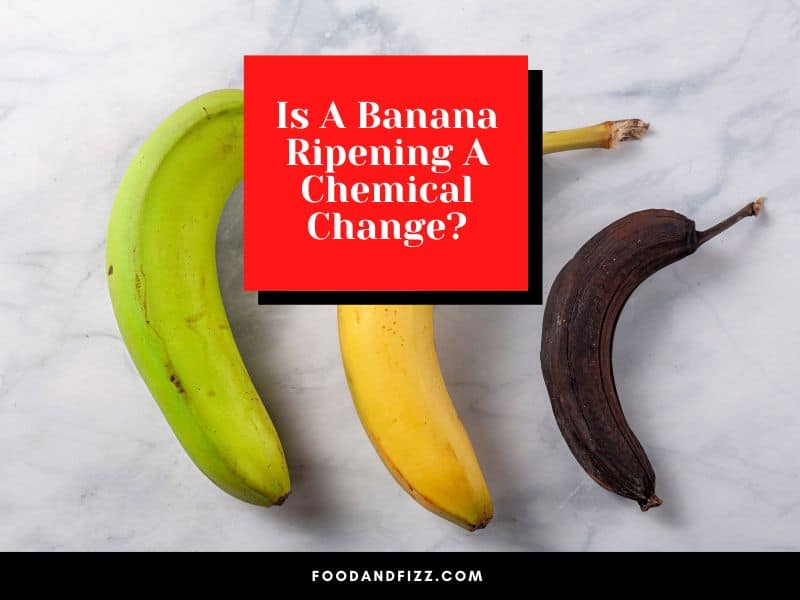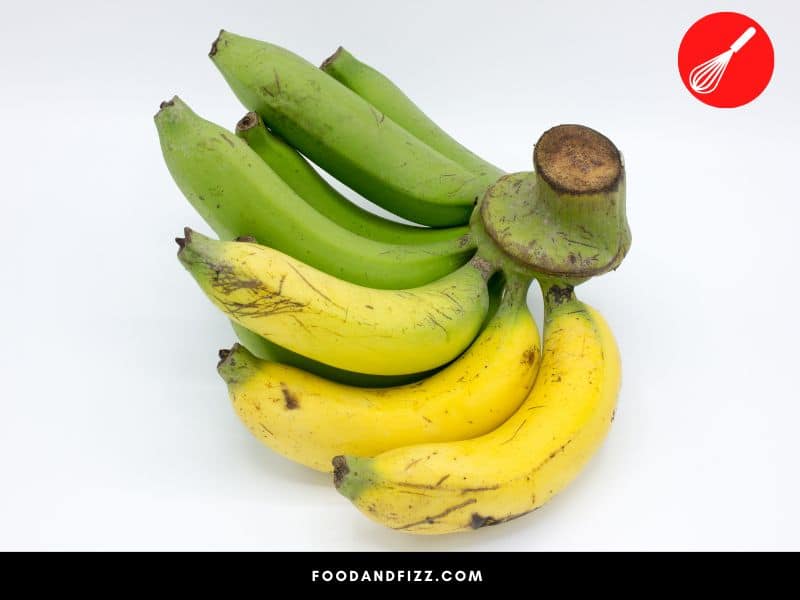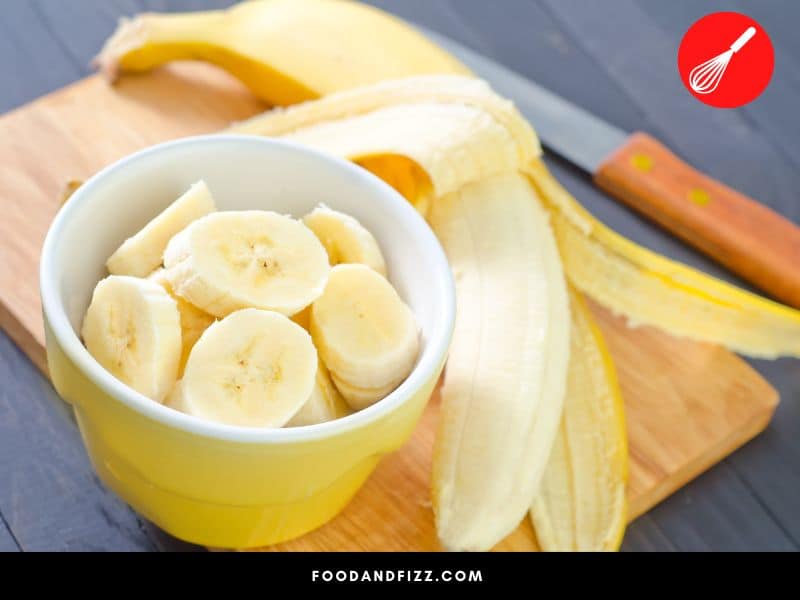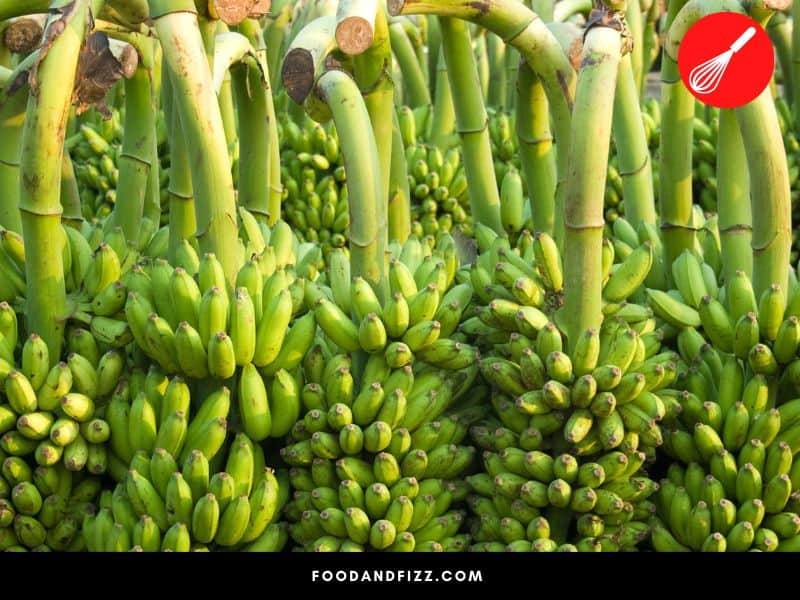A chemical change is when a substance is permanently transformed into a new substance. The change could result from altered temperatures, mixing of different items, etc.
Chemical change alters the composition of a product and could lead to the precipitate formation, color change, odor change, change in temperature, or change in the state of matter. Such changes are largely irreversible.
Is A Banana Ripening A Chemical Change?
Ripening a banana-like in all fruits, is a chemical change, and several reasons exist. First, chemical activities occur during the ripening stimulated by ethylene, a plant hormone that encourages fruit ripening. Besides, during ripening, the starch in bananas gets hydrolyzed, changing its state to simple sugars. Secondly, the ripening changes the texture, color, taste, and odor of the banana fruit. All these changes are irreversible.

What Is the Chemistry Behind Banana Ripening?
Banana ripening is a chemical process that changes a banana’s appearance, smell, and taste. It is the irreversible changes that make the process chemical. That means once the ripening texture, odor, taste, and color appear, putting the banana back in its original state is impossible.
The ripening process involves the breakdown of starch in the banana into tasty sugars such as glucose, fructose, and sucrose. Like all other fruits, bananas contain ethylene, a plant hormone that quickens the ripening process. An unripe banana contains amylopectin and amylose starch.
During the ripening process, the enzyme-resistant starch decreases while water-soluble pectin increases. Ethylene is a good stimulator as it leads to starch degradation, thus quickening the ripening process.

What Notable Changes Are There For A Ripening Banana?
There are several changes to note for a ripening banana, which could be tangible and intangible. As such, people use different body senses to notice these changes.
Such feelings include touch, smell, and taste. Here are some common changes for a ripening banana.
- Sweet Taste: The ripening process leads to the breakdown of starch, forming sweet, simple sugars easily absorbed in the body.
- Softening: Ripening makes both the banana and its peel soften. That’s because the cells are broken down during the ripening process, thus weakening their bond.
- Color Change: An unripe banana is primarily green in color and will begin to change to yellow after ripening. That’s mainly because of the breakdown of chlorophyll into simple sugars.
- Texture Change: When you peel an unripe banana, it begins to turn black and tastes bland due to isoamyl acetate.

Can the Banana Ripening Process Be Artificially Quickened?
The ripening process is usually a natural process for all fruits. However, it is possible to instigate or quicken the ripening process in fruits such as bananas.
Some of the techniques applicable to accelerate the ripening process include;
- Warm Environment: Bananas ripen faster if stored in a warm and dry place. Warmth and heat bring out the sugars in a banana and weaken the bond between the cells, thus stimulating ripening. However, too much heating could be disastrous.
- Ripening Agents: The ripening chemical change can be propelled using specific chemical agents that will motivate the reactions leading to ripening. Some of the most notable ripening agents for bananas are;
- Acetylene Gas: It can be obtained from calcium carbide. Acetylene is a chemical compound and the simplest known alkyne.
- Lauryl Alcohol: It is an industrial compound made from coconut oil or palm kernel. Again, it can also be described as fatty alcohol. However, one should remain cautious when using lauryl alcohol as it is also toxic.
- Ethephon: It is a growth regulator from the phosphonate family plant and is widely known for its ripening capabilities.
- Ethylene Gas: It is produced from fruits. However, to propel ripening, one can also store the bananas together with celery, known for the massive release of ethylene gas.

What is the Difference Between a Raw and Ripe Banana?
Some people struggle to tell the difference between raw and ripe bananas. That’s because some think a ripe banana does not qualify as a raw banana. While they could have their reasons for reaching that conclusion, that is not the case.
Raw bananas are uncooked bananas, whether ripe or unripe. As such, it would be safe to say that ripe bananas are also raw. That’s because they have not been cooked and thus qualify for the definition. However, it is also important to note that unripe but uncooked bananas are raw too.
How Can I Tell My Bananas Have Ripened?
After the ripening chemical change, one can tell a banana has ripened. Here are some easy ways you can tell your banana is ripe.
- Sweet Fruity Odor: Ripe bananas produce a pleasant, sweet, and soothing smell absent from unripe bananas.
- Soft Texture: Ripe bananas softens, thus making them easier to squeeze. That’s because the ripening weakens the bond between different cells in the fruit.
- Easy to Pluck: Bananas are held together in bunches. For unripe bananas, it is difficult to pluck them from the stem holding the bunch together. However, ripe bananas easily snap off the stem.
- Peeling is Easy: If your banana is resistant to removing the peel, it is not ripened. Ripe bananas peel easily.
- Color Change: A ripening banana will turn its color from green to yellow.
- No Discomfort in the Mouth: Unripe bananas will leave a film in the mouth, creating discomfort. Ripe bananas have a sweet taste left in the mouth.

Frequently Asked Questions to Is A Banana Ripening A Chemical Change?
Can I Reverse the Banana Ripening Process?
It is impossible to reverse the ripening process. That’s because it has undergone a chemical process that permanently changes it from one state to another.
Can I Ripen a Banana by Cooking It?
You can’t ripen bananas by cooking them. However, you can warm their environment a little bit to stimulate ripening.
Which Ripening Agents Should I Use to Ripen Bananas Artificially?
There are several ripening agents that people use to ripen bananas. The most commonly used ones include ethylene gas, ethephon, acetylene gas, and lauryl alcohol.
Conclusion to Is A Banana Ripening A Chemical Change?
A banana ripening is considered a chemical change. A chemical change is defined as the permanent alteration of color, texture, odor, and state of matter and is irreversible.
A ripened banana has a different chemical composition than an unripe banana, and it cannot be reverted back to its old state once it has undergone a change. Therefore, a banana undergoing the process of ripening is experiencing a chemical change.

